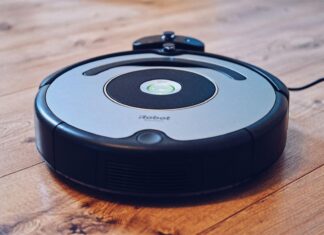One of the biggest concerns that come with owning and using a mobile phone is the contact list that usually takes time to create and, over time, fills with important contacts. Sometimes a lot of the contacts are not used but are there in case you might one day need to use them, and other contacts are used frequently, such as family, friends, and work.
In this article, I present you with a guide to synchronizing your contacts using the various iPhone methods available.
There are two methods for syncing contacts, one is using iCloud and the second is using iTunes, both are good, and either one should be done to secure your device’s data.

Using iCloud to sync Contacts
To use iCloud you need to set it up to sync, so here are the steps to sync your contacts using iCloud:
- Select Setting and tap on the top of the screen where your name and ID Banner appear.
- In the Personal Settings screen, select the Apple ID option.
- In the Apple, ID screen choose the iCloud option.
- In the iCloud screen choose “Apps using iCloud” and look for the “contacts” option
- Toggle the contacts to on; the toggle is on when it is bright green.
Once you have toggled the iCloud contacts switch to on, iCloud will sync your contacts and dependant on what backup and sync settings you have set, will either sync using WIFI only or using cellular data. Consider that even large contact lists are very small compared to on photo in the album, as such, syncing should not take up too much data streaming or time.
iCloud sync settings
Take note that iCloud syncs automatically, which means that it will do this frequently. Now, if you have concerns about battery life, memory handling, or another such issue, you can change the iCloud sync and backup settings to regular pre-set intervals. This will reduce battery use as well as bandwidth use if you use a metered WIFI connection.
Viewing iCloud Content
To make sure your iCloud contact list is up to date, you can always enter iCloud by using Safari, or any browser on your PC and Mobile devices and surfing to iCloud.com. Remember, if you use two-factor authentication, you will need two apple devices by your side to confirm the login.
Using iTunes to Sync Contacts
iCLoud is a very useful method but is not the only one, and most, in fact, prefer to sync using iTunes. The iTunes app works wonders with a USB cable, and once your device is connected to your PC, you can initiate iTunes and start a sync. Take note that setting up iTunes is best done before synchronizing for the first time. When you install iTunes, set up what you want to sync, which directories and apps. As for contacts, that’s a standard feature and is fast and simple.
Here are the basic steps for starting an iTunes sync:
- Attach the USB cable to the iPhone and the PC.
- Launch iTunes on your PC (if it doesn’t initiate automatically)
If you have preset the iTunes settings your iTunes will start syncing immediately. I prefer to start it manually, giving me time to review the iPhone contents before starting. Either way, once you connect the phone to the PC and iTunes is operational, you can start the sync at any time.
To see how the sync and iTunes are controlled, click on the left-hand corner of the iTunes app screen and select the icon of your device (iPhone) that are connected.
To locate your contacts, choose “info” this is where they are located.

If you used iClioud to sync, then iTunes will not show you the Sync Contacts checkbox. If, however, this is your first time or you never used iCloud, then you can check the box.
After checking the contacts sync box, press the sync button that appears on the bottom right side of the screen and waits for the system to notify the sync was successful.
Every time you add, edit, change your contacts, its advisable to sync them at the end of the day. If you use iCloud and have it on automatic, then the contacts will sync every time you update them.








